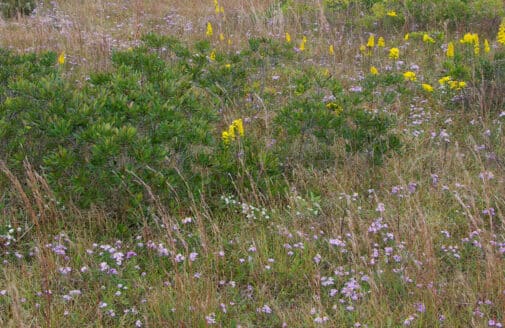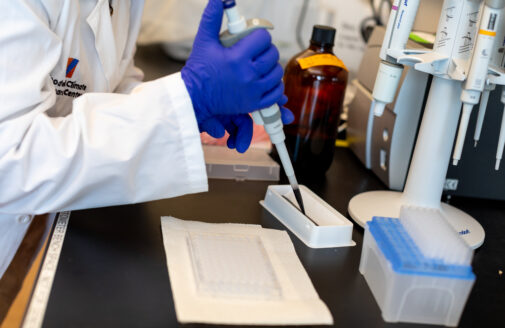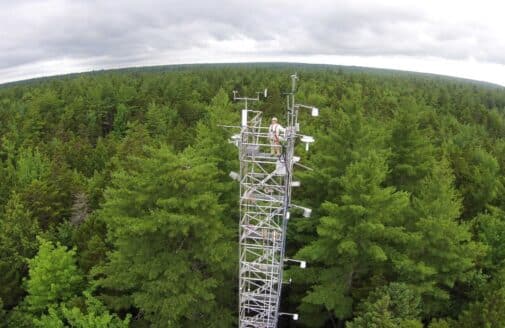Introducing the Open Soil Spectral Library

Soil samples awaiting analysis.
photo by Chris Linder
On this World Soils Day, the Soil Spectroscopy for the Global Good Coordinated Innovation Network, founded by Woodwell Climate, Opengeohub Foundation and University of Florida, announced the release of the Open Soil Spectral Library (OSSL).
Soil Spectroscopy Made Universally Accessible
The need for high-quality soil data has grown exponentially to support natural resource assessments, sustainable food production, and climate mitigation goals. Soil scientists have been struggling to meet this demand because measurement of soil still largely relies on shovels and benchtop analytical methods.
Reflectance spectroscopy, the measurement of light absorption at different wavelengths, has emerged as an important, rapid, and low-cost complement to traditional wet chemical analyses. However, a bottleneck to more widespread adoption of soil spectroscopy is the need for large reference training datasets and complex data analyses. To bridge this gap and enable hundreds of research soil and agronomy groups to collect more affordable soil data, Soil Spectroscopy for the Greater Good has created an open source and open data project.

Image courtesy of the Open Soil Spectral Library
The OSSL consists of multiple interrelated components. The first is a large database consisting of several continental and national collections of spectral data in both the visible-near infrared (VNIR) and mid infrared (MIR) regions of the electromagnetic spectrum, as well as traditionally measured soil properties. These data can be accessed and visualized through the OSSL Explorer or directly worked with through an API or by downloading a snapshot of the entire database.
Open and FAIR science is the heart of the OSSL.
The second main component is the OSSL Engine, where users can upload spectra collected on their own instruments to estimate a set of soil properties using an ensemble of machine learning models.
Open and FAIR science is the heart of the OSSL. All compiled data and software is available here (under MIT license) and a versioned back-up copy of the data is also available via Zenodo (under CC-BY license), to allow users to extend, build upon, and even construct commercial businesses on top of the data and code.
Soil Spectroscopy for the Global Good is a Coordinated Innovation Network that brings together soil scientists, spectroscopists, informaticians, data scientists and software engineers to overcome some of the current bottlenecks preventing wider and more efficient use of soil spectroscopy. Datasets have been contributed by the USDA NRCS National Soil Survey Center – Kellogg Soil Survey Laboratory, ICRAF-World Agroforestry, ISRIC-World Soil Information, the Africa Soil Information Service funded by the Bill and Melinda Gates Foundation, the European Soil Data Centre, the National Ecological Observatory Network, and ETH Zurich.
Both the OSSL Explorer and OSSL Engine are currently still beta models and the project is accepting feedback for improvements here. Please contribute to this project and help us make better tools for measuring and monitoring our soils and land.







